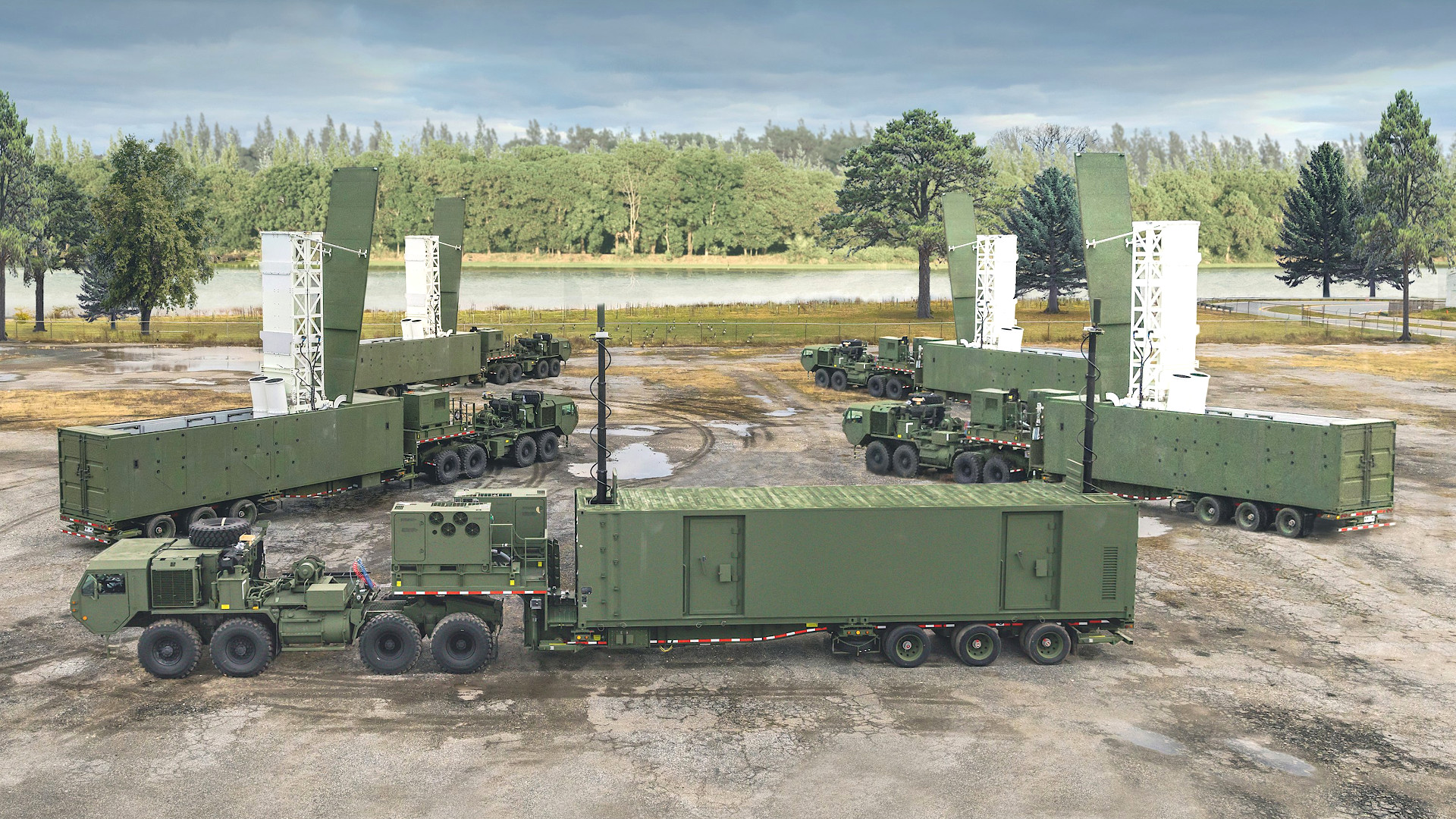Analyzing The US Missile System: Implications For Relations With China

Table of Contents
- Capabilities of the US Missile System
- Land-Based Missiles
- Sea-Based Missiles
- Air-Based Missiles
- Missile Defense Systems
- China's Missile Capabilities and the US Response
- China's Expanding Arsenal
- US Strategic Response
- Geopolitical Implications and Potential for Conflict
- The Risk of Miscalculation
- Impact on Regional Stability
- Conclusion: Analyzing the US Missile System and Its Impact on US-China Relations
Capabilities of the US Missile System
The US possesses a formidable nuclear triad, a cornerstone of its nuclear deterrence strategy. This triad comprises land-based, sea-based, and air-based missile delivery systems, each contributing uniquely to the nation's strategic capabilities.
Land-Based Missiles
The backbone of the US land-based nuclear deterrent is the Minuteman III ICBM. These intercontinental ballistic missiles boast a significant range, high accuracy, and substantial payload capacity, making them a critical component of the nuclear triad.
- Minuteman III: These ICBMs are capable of delivering multiple independently targetable reentry vehicles (MIRVs), allowing for the targeting of multiple sites with a single missile.
- Modernization Efforts: The US is currently undertaking a major modernization program for its ICBM force, aiming to replace the aging Minuteman III with a new system in the coming decades.
- Number of Warheads: The exact number of warheads deployed on Minuteman III missiles remains classified, but it represents a considerable portion of the US nuclear arsenal. This substantial number, along with their accuracy and range, significantly contributes to the US's missile defense capabilities and deterrence strategy. These capabilities are further enhanced by sophisticated missile defense systems.
Sea-Based Missiles
Submarine-launched ballistic missiles (SLBMs) provide the US with a survivable second-strike capability, crucial in the context of nuclear deterrence. Their deployment on Ohio-class submarines ensures that a significant portion of the US nuclear arsenal can survive a first strike, guaranteeing a retaliatory capacity.
- Trident II D5: The Trident II D5 SLBM is a highly accurate and reliable missile with a long range, representing the most advanced SLBM in the US arsenal.
- Number of Submarines: The US Navy operates a fleet of Ohio-class submarines, each carrying a significant number of Trident II D5 missiles. The exact number is classified for national security reasons.
- Stealth Capabilities: The submarines' stealth capabilities enhance their survivability, making them a highly effective deterrent. This "second-strike capability" is a significant factor in maintaining strategic stability with potential adversaries.
Air-Based Missiles
Air-launched cruise missiles (ALCMs), carried by long-range bombers like the B-52 and B-2 Spirit, offer a flexible and versatile option within the US arsenal. These missiles provide the capability for both conventional and nuclear strikes, allowing for a range of strategic options.
- AGM-86B: The AGM-86B ALCM is a notable example, providing a long-range, precision-guided munition capable of delivering both conventional and nuclear payloads.
- Delivery Platforms: Stealth bombers like the B-2 Spirit offer unique advantages in terms of survivability and penetration capabilities, allowing for the delivery of ALCMs even in heavily defended airspace.
- Range and Accuracy: The combination of stealth capabilities and advanced guidance systems provides significant advantages in terms of range and accuracy, enhancing the effectiveness of these air-based missiles.
Missile Defense Systems
The US has invested heavily in missile defense systems, aiming to protect against ballistic missile attacks. Ground-Based Midcourse Defense (GMD) is a key component of this effort, but its capabilities and limitations are subject to ongoing debate.
- Ground-Based Midcourse Defense (GMD): This system is designed to intercept incoming intercontinental ballistic missiles in their midcourse trajectory.
- Effectiveness: The effectiveness of GMD against various types of missiles, particularly against sophisticated modern systems, remains a topic of ongoing discussion and testing.
- Limitations and Controversies: The system's limitations and the controversies surrounding its effectiveness have spurred debate about its cost-effectiveness and overall strategic value. Concerns regarding the effectiveness of intercepting hypersonic missiles remain a particular challenge.
China's Missile Capabilities and the US Response
China's rapid advancements in missile technology pose a significant challenge to the US. The expansion and modernization of China's missile forces, encompassing ICBMs, SLBMs, and SRBMs, are reshaping the strategic landscape of the Asia-Pacific region.
China's Expanding Arsenal
China's missile arsenal is rapidly expanding and modernizing, presenting a growing challenge to US strategic interests. This expansion includes the development of advanced ICBMs and SLBMs.
- DF-41: The DF-41 ICBM represents a significant leap in China's long-range strike capabilities, with an estimated range capable of reaching the continental US.
- JL-3: The JL-3 SLBM, deployed on China's newest generation of nuclear submarines, enhances their sea-based deterrent capabilities.
- Pace of Modernization: The rapid pace of China's missile program modernization necessitates a continuing evaluation and adaptation of US strategic responses. This pace necessitates a dynamic and evolving US strategic response.
US Strategic Response
In response to China’s growing military capabilities, the US is adapting its military strategy and increasing its investments in defense. This involves modernization of existing systems and the development of new technologies to maintain a strategic advantage.
- Increased Defense Spending: Increased defense spending is a key component of the US response, aiming to counter the advancements made by China and maintain a technological edge.
- Modernization of Existing Systems: The US continues to modernize its existing missile systems, including upgrades to existing ICBMs and development of new missile defense technologies.
- Development of New Technologies: Investment in new technologies, such as hypersonic missile defense and advanced missile detection systems, are crucial in countering potential threats.
Geopolitical Implications and Potential for Conflict
The complex interplay between the US missile system and China’s expanding arsenal creates a delicate strategic environment with a significant potential for miscalculation and conflict.
The Risk of Miscalculation
The escalating arms race and the increasing complexity of the strategic environment create a heightened risk of miscalculation and accidental escalation. Clear communication and robust risk reduction mechanisms are therefore essential.
- Importance of Clear Communication: Open communication channels and established protocols for crisis management are vital in reducing the risk of unintended escalation.
- Risk of Escalation Spirals: The potential for escalation spirals, where each side's actions provoke a response from the other, leading to uncontrolled escalation, necessitates caution and restraint.
- Role of Diplomacy: Diplomacy and arms control agreements play a critical role in de-escalation and fostering strategic stability.
Impact on Regional Stability
The ongoing arms race and the presence of advanced missile systems in the Asia-Pacific region have a profound impact on regional stability. This impact is felt through increased tensions and the potential for miscalculation.
- Potential for Increased Tensions: The proliferation of advanced missile systems in the region contributes to a heightened atmosphere of tension and mistrust among regional actors.
- Impact on Alliances: The evolving strategic landscape influences alliances and partnerships in the region, shaping their response to the growing military capabilities.
- Role of Regional Players: Other regional players play a significant role in managing the dynamics of the situation, influencing the overall level of regional stability.
Conclusion: Analyzing the US Missile System and Its Impact on US-China Relations
The capabilities of the US missile system, encompassing land-based, sea-based, and air-based systems, form a crucial part of its nuclear deterrence strategy. China's expanding and modernizing missile arsenal, however, presents significant challenges. This evolving situation underscores the need for strategic communication and effective arms control measures to mitigate the risk of conflict. Understanding the intricacies of the US missile system and its implications for US-China relations is paramount. Further research on the US missile system and analyzing the strategic implications of missile technology are crucial for informed decision-making regarding the future of this critical relationship. Understanding the implications for US-China relations requires ongoing analysis and careful consideration of all contributing factors.

 Uk Luxury Brands Struggle With Eu Export Growth Post Brexit
Uk Luxury Brands Struggle With Eu Export Growth Post Brexit
 Leclerc And Hamilton The Ferrari Orders Fallout And Its Implications
Leclerc And Hamilton The Ferrari Orders Fallout And Its Implications
 Hamilton Ve Leclerc In Cin Gp Diskalifiyesi Ferrari Icin Bueyuek Darbe
Hamilton Ve Leclerc In Cin Gp Diskalifiyesi Ferrari Icin Bueyuek Darbe
 Baufortschritt Die Architektin Legt Die Finale Form Fest
Baufortschritt Die Architektin Legt Die Finale Form Fest
 Le Bo Cafe De Biarritz Une Nouvelle Page S Ecrit
Le Bo Cafe De Biarritz Une Nouvelle Page S Ecrit
